Section - 11
Tables and Related Columns
11.1 Fundamentals
11.2 Table Basics
11.3 Table Headings
11.4 Column Headings
11.5 Row Headings
11.6 Column Entries
11.7 Techniques for Shortening Column Width
11.8 Keying Long Entries
11.9 Skeleton and Partially Filled-In Tables
11.10 Omitted Portion of Print Table.
11.11 Graphics with Identified Values
11.12 Wide Tables
11.13 Wide Tables: Facing Pages
11.14 Wide Tables: Vertical Division
11.15 Wide Tables: Interchanged Columns and Rows
11.16 Wide Tables: Listed Table Format
11.17 Wide Tables: Linear Table Format
11.18 Wide Tables: Stairstep Table Format
11.19 Samples
Tables are transcribed as they are in print if possible and alternate methods are used when that is not possible. Clarity for the reader, intended use, and the information contained in a table are all considered when selecting an alternative table format.
Column Headings: Headings across the top of the table
Separation Line: Line between a column heading and column entry
Row Headings: Headings listed vertically on the left and/or right side of the table
Column Entries: Intersections of a row and a column
Guide Dots: A series of dot 5s leading the reader from one column to the next or indicating an empty column entry.
Example 11-1: Parts of a Table (Print Only)

Example 11-2: Simple Table

7777777777777777777777777777777777777777
,animal ,l;ge/ ,life ,span
"3333333 "33333333333333333
mosquito #cj "ds
gorilla #ej ye>s
elephant #fe ye>s
gggggggggggggggggggggggggggggggggggggggg
⠀⠀⠀⠀⠀⠀⠀⠀⠀⠀⠀⠀⠀⠀⠀⠀⠀⠀⠀⠀⠀⠀⠀⠀⠀⠀⠀⠀⠀⠀⠀⠀⠀⠀⠀⠀⠀⠀⠀⠀
Example 11-3: Related Columns

⠀⠀⠀⠀⠀⠀⠀⠀⠀⠀⠀⠀⠀⠀⠀⠀⠀⠀⠀⠀⠀⠀⠀⠀⠀⠀⠀⠀⠀⠀⠀⠀⠀⠀⠀⠀⠀⠀⠀⠀
7777777777777777777777777777777777777777
,9f9itive ,pa/ ,pa/ ,"piciple
"33333333 "33333 "3333333333333
awake """ awoke awok5
2 """"""" was1 7 be5
be> """"" bore born
b1t """"" b1t "" b1t
2come """ 2came 2come
2g9 """"" 2gan 2gun
b5d """"" b5t "" b5t
gggggggggggggggggggggggggggggggggggggggg
⠀⠀⠀⠀⠀⠀⠀⠀⠀⠀⠀⠀⠀⠀⠀⠀⠀⠀⠀⠀⠀⠀⠀⠀⠀⠀⠀⠀⠀⠀⠀⠀⠀⠀⠀⠀⠀⠀⠀⠀
a. Begin the first column of a table in cell 1. Tables are not treated as displayed material.
b. Each column is separated from a following column by two blank cells.
c. The width of a column is determined by the widest entry in the column on that braille page, which may be the column heading or a column entry. Column widths do not need to match the column widths on the previous or following page of long tables.
d. Leave a blank line before and after tables that are not enclosed in boxes.
e. When a table is enclosed in a box, follow the guidelines for box lines in Formats, §7, Boxed Material. Box lines may be omitted when a table will fit on a single page without them.
f. Insert print notes pertaining to a table after the table title/label, but before the body of the table and any transcriber's notes. (See Formats, §16.8, Notes in Tables and Columned Material.)
g. Place source citations on the next line after completion of the table blocked four cells to the right of the material it follows. Follow print for placement above or below the bottom box line. A blank line should follow a source citation when it appears immediately after the bottom box line.
a. As a general rule, tables are placed after the paragraph(s) of reference.
b. Place the table where it most logically fits when no mention of it is made on the page. Put the table after the last complete paragraph on the print page when an obvious location cannot be identified.
c. Place tables on a single braille page whenever possible.
d. If necessary, a table may be divided between pages at the most appropriate place, taking into consideration clarity for the reader. Insert the page break at the beginning of a new row if possible.
e. A table may have a row on the last line of the braille page if the information in the row does not intrude into the three blank cells before the braille page number. The full width of the last line of the braille page can be used when the braille page number is omitted on even pages (interpoint).
a. Insert a transcriber's note at the original site, letting the reader know the table has been moved and where it is located. Include the continuation letter with the print page number. Sample:
Table moved to page a61.
b. Insert a transcriber's note before the table letting the reader know where the table was originally located. Sample:
Table moved from page 60.
a. Regardless of its print location, place a table caption (usually a brief explanation) before the table.
b. Use 7-5 margins. If the table has no title or heading, insert an identifier (e.g., figure, chart, table, etc.) enclosed in transcriber's note indicators. The caption follows the identifier on the same line.
(See Sample 11-1: Table Caption on page 11-25.)
a. Center table headings.
b. Follow print for the placement of table headings, which may be before or after a top box line.
c. Do not leave a blank line between a table heading and a following box line.
d. Do not leave a blank line between a box line and a following table heading.
a. Center sequentially numbered table headings.
Example 11-4: Sequentially Numbered Table Heading
⠀⠀⠀⠀⠀⠀⠀⠀⠀⠀⠀⠀⠀⠀,table #i4e
⠀⠀⠀⠀⠀⠀⠀⠀⠀,smok+ ,am;g ,am]icans
⠀⠀⠀⠀⠀⠀⠀⠀⠀⠀⠀⠀⠀by ,age & ,sex
b. When a sequentially numbered table is longer than one braille page, repeat and center the table number on line 25 of each succeeding braille page, followed by "(cont.)". When a table occupies only one page, do not put the table number on line 25.
Example 11-5: Continued Sequentially Numbered Table
25 ⠀⠀⠀⠀⠀⠀⠀⠀⠀⠀,table #i4e "<3t4"> #de
c. With the exception of an end-of-volume statement, no other text should be placed between the completion of a table and the notation on the last line.
d. If a sequentially numbered table has been omitted from the braille version, explain the omission in a transcriber's note placed at the appropriate location.
a. Start the first column heading in cell 1.
b. Do not use guide dots between column headings.
c. Column headings and their runovers are left-justified above their respective columns.
d. All column headings end on the same line.
a. A column separation line is a horizontal line that is used to separate column headings from the column entries.
b. The separation line "3333 (5, followed by a series of 25) extends across the full width of the column.
c. Columns without a heading do not have a separation line.
Example 11-6: Column Headings with Runovers

⠀⠀⠀⠀⠀⠀⠀⠀⠀⠀⠀⠀⠀⠀⠀⠀⠀⠀⠀⠀⠀⠀⠀⠀⠀⠀⠀⠀⠀⠀⠀⠀⠀⠀⠀⠀⠀⠀⠀⠀
7777777777777777777777777777777777777777
⠀⠀⠀⠀⠀⠀⠀⠀⠀⠀⠀⠀⠀⠀⠀,habitat ,pot5tial
,species ,unit ,popula;n
"333333333333 "3333333 "333333333
,grizzly ,be> ,v>iable ,undet]m9$
a. Insert a separation line after the primary heading. The line starts at the left margin of the primary and secondary sub-column headings and ends at the right margin of the last sub-column. The separation line is the width of the primary heading when it is wider than all of the sub-column headings.
b. Sub-column headings begin on the next line, left-justified above their respective columns. Limit the sub-column headings to two lines.
c. Each sub-column heading is followed by a separation line, running the width of the column.
(See Sample 11-2: Complex Table on page 11-26.)a. Repeat the column headings (with accompanying separation lines) at the top of each succeeding page.
b. Insert a blank line between a running head and the repeated headings.
c. Omit the blank line following the running head if additional runover pages can be avoided by the use of line 2.
a. Use 1-3 margins for row headings.
b. When there are row subheadings, use 1-5 margins for the primary row headings and 3-5 margins for the secondary row headings.
c. Limit a row heading to two lines.
d. Use guide dots following row headings as needed.
e. Row headings repeated in the last column are omitted.
Example 11-7: Repeated Row Headings Omitted (Print Only)

a. All column entries begin on the same line on which the row heading ends.
b. Guide dots are used, if necessary, after row heading runovers.
(See Sample 11-4: Column, Row, and Column Entry Runovers on page 11-28.)a. When a row heading is not repeated but refers to more than one column entry, leave the area(s) where the inferred row heading(s) belong blank.
b. All column entries sharing the same row heading are considered to be the complete row entry.
c. Do not split a complete row heading between pages unless absolutely necessary.
d. When the complete row heading must be split between pages, repeat the row heading on the subsequent page.
(See Sample 11-5: Implied Row Headings on page 11-29.)a. When a diagonal line indicates inclusive row and column headings, the text to the left and below the diagonal line is treated as a column heading to the row headings.
b. Text to the right and above the diagonal line is treated as an inclusive heading to two or more of the following columns.
(See Sample 11-7: Table with a Diagonal Line on page 11-32.)a. Indent column entry runovers two cells to the right of the left-hand margin of the column. All columns do not have to end on the same line.
b. Begin all column entries on the line on which the row heading ends.
c. Left-adjust items within the columns of a table (not including numbers) even though the print text shows column entries centered or right-adjusted.
d. Transcribe numerals aligned by place value in print as shown, i.e., placed to align digits, decimals, or commas.
e. Do not divide numbers between lines unless absolutely necessary.
f. Two or more guide dots lead the reader from one column to the next, and are inserted to fill out the width of a column with shorter entries or to designate blank spaces within the table. Leave one space between the end of the entry and the beginning of guide dots.
g. Do not insert guide dots after a column runover (other than the first column), as the runover is not leading to the beginning of the next column.
See Formats, §11.12, Wide Tables, for more information on specialized table formats.a. Follow print for placement of retained horizontal lines shown across a column. Use the horizontal line symbol across the width of the column. (See UEB, §16.2, Horizontal Line Mode.)
b. When horizontal lines separate column items from totals, the horizontal line symbol should extend across the width of the column total. (See Sample 11-8: Column Totals on page 11-33.)
Use guide dots across the width of a column to indicate a blank space or a blank to be filled in. Explain the series of guide dots in a transcriber's note. Sample:
A series of guide dots across the width of a column indicates a blank space.
(See Sample 11-9: Table with Dashes on page 11-34, Sample 11-10: Blank Cells Indicating Answers to Be Inserted on page 11-35, and Sample 11-11: Blank Column Entries on page 11-36.)Note: Transcribe segmented numbers in technical works and foreign language texts in accordance with the applicable code or supplement.
Insert the numeric space indicator (dot 5) to represent the spaces in segmented numbers. (See UEB, §6.6, The Numeric Space.)
Example 11-8: Segmented Numbers in a Table
⠀⠀⠀⠀⠀⠀⠀⠀⠀⠀⠀⠀⠀⠀⠀⠀⠀⠀⠀⠀⠀⠀⠀⠀⠀⠀⠀⠀⠀⠀⠀⠀⠀⠀⠀⠀⠀⠀⠀⠀
7777777777777777777777777777777777777777
⠀⠀⠀⠀⠀⠀@.<,model numb]s >e spac$ 9 pr9t4
⠀⠀⠀⠀,a dot #e replaces ! space4@.>
⠀⠀⠀⠀⠀⠀⠀⠀⠀⠀⠀⠀⠀⠀⠀⠀⠀⠀⠀⠀⠀⠀⠀⠀⠀⠀⠀⠀⠀⠀⠀⠀⠀⠀⠀⠀⠀⠀⠀⠀
,/ove """" ,model #cd"dcb"efg
,microwave ,model #hg"ijh"eca
gggggggggggggggggggggggggggggggggggggggg
⠀⠀⠀⠀⠀⠀⠀⠀⠀⠀⠀⠀⠀⠀⠀⠀⠀⠀⠀⠀⠀⠀⠀⠀⠀⠀⠀⠀⠀⠀⠀⠀⠀⠀⠀⠀⠀⠀⠀⠀
a. The ditto mark cannot appear at the top of a braille page when a table is continued on one or more pages. In this case repeat the item or term represented by the ditto.
b. List the ditto mark on the Special Symbols page, or in a transcriber's note before the text.
(See Sample 11-12: Table with Dittos on page 11-37.)a. Condensed entries and abbreviations are preferred to keyed headings/entries. Place a transcriber's note before the table to identify entries not easily identifiable from the context of the surrounding text.
b. Use known acronyms and state/province/country abbreviations, etc.
c. Uppercase letters may be converted to lowercase.
d. Font attributes may be ignored.
e. Punctuation may be omitted.
f. A transcriber's note is not required when converting uppercase to lowercase, omitting font attributes, or omitting punctuation. (See Sample 11-13: Punctuation Omitted on page 11-38.)
g. To conserve space, symbols for non-varying print signs or abbreviations shown with all the entries in a column of numbers (e.g., %, $, km, B.T.U., etc.) may be included in column headings and omitted within the body of the table. Explain this usage in a transcriber's note.
h. To conserve space, units of measure shown within the body of the table may be abbreviated as necessary. Place a transcriber's note before the table to identify abbreviations that are not easily identifiable from the context of the surrounding text. Sample:
The abbreviation na represents nanoseconds in the table below.
i. When the table uses only one type of symbol or abbreviation, omit it from all entries in the table. Explain the omission in a transcriber's note placed before the table. Sample:
All numbers in the table are percentages.
(See Sample 11-14: Transcriber's Note Regarding Omitting a Print Symbol on page 11-39.)
j. Tables consisting solely of numbers in the row headings and column entries may use the numeric passage indicator to save space. (See UEB, §6.9, Numeric Passage Indicator and Numeric Terminator.) This is done only when it results in the table appearing on one page. Place a transcriber's note before the table to inform the reader of this format.
Example 11-9: Numeric Passage Indicator

⠀⠀⠀⠀⠀⠀⠀⠀,,,sample numb] table,'
⠀⠀⠀⠀⠀⠀⠀⠀⠀⠀⠀⠀⠀⠀⠀⠀⠀⠀⠀⠀⠀⠀⠀⠀⠀⠀⠀⠀⠀⠀⠀⠀⠀⠀⠀⠀⠀⠀⠀⠀
⠀⠀⠀⠀⠀⠀@.<,symbols us$ 2l3
⠀⠀⠀⠀⠀⠀⠀⠀⠀⠀⠀⠀⠀⠀⠀⠀⠀⠀⠀⠀⠀⠀⠀⠀⠀⠀⠀⠀⠀⠀⠀⠀⠀⠀⠀⠀⠀⠀⠀⠀
.=## ,num]ic passage 9dicator
.=#' ,num]ic t]m9ator@.>
⠀⠀⠀⠀⠀⠀⠀⠀⠀⠀⠀⠀⠀⠀⠀⠀⠀⠀⠀⠀⠀⠀⠀⠀⠀⠀⠀⠀⠀⠀⠀⠀⠀⠀⠀⠀⠀⠀⠀⠀
⠀⠀⠀⠀⠀,mon ,tue ,w$ ,?ur ,fri
⠀⠀⠀⠀⠀"3333 "3333 "3333 "3333 "33333
##a hgaga dcjfb cigac ajjbd cbgb
b bhijc ejhef cjedi hiahg afgd
c hfbdd gaaea eejcf acjdd ccaf#'
k. One blank cell may be used between columns of numbers when the column headings are no wider than the longest entry in the column. This should be done only when it would result in the table appearing on one page. (See Sample 11-15: One Cell between Columns on page
11-40.)
l. The numeric passage indicator can be used in conjunction with one blank cell between columns of numbers if this results in the table appearing on one page. The numeric passage indicator/terminator may be placed above/below the table entries in order to maintain alignment of columns. These symbols are required on the Special Symbols page.
a. Devise a key for an item that reflects the meaning of the heading or entry.
b. Use letters, numbers, or a combination of letters and numbers, consisting of two or three cells.
c. Key items may not correspond to shortform words or contractions.
d. One of the letters in the key item must have a dot 3 or 6, except for standard International Organization for Standardization (ISO) abbreviations for states (CA, IA, etc.), provinces (AB, BC), and countries (CC, FJ, etc.).
a. The transcriber's note has multiple elements. Use 7-5 margins for the note and 1-3 margins for the key list. Cell-5 headings may also be part of the transcriber's note. Sample:
Key to column and row headings: (7-5)
Column headings (5)
at Additions to Loans (1-3)
ms Money Supply (1-3)
re Reserves (1-3)
Row headings (5)
sl Sum of Additional Transactions (1-3)
tl Total (1-3)
b. For our purposes the key list is the group of key items, which includes the short identifier and the complete explanation.
c. Insert a transcriber's note containing the key list below the table title or top box line. When neither of these appears in the text, place the transcriber's note before the body of the table. When both of these are present, place the transcriber's note after the title if the title is inside the box or after the top box line if the title is outside the box.
Key List
d. Leave a blank line before a transcriber's note and key list that follows a table title.
e. Do not leave a blank line before a transcriber's note and key list following a top box line.
f. Place the key list on a single page whenever possible.
g. Place the key list on the same braille page, or facing page, as the table whenever possible.
h. Leave a blank line before and after the key list.
i. The key list is always the last element of a transcriber's note when additional information is included. Sample:
The table is divided vertically into 2 sections. (7-5)
Key to column headings: (7-5)
nf Number of FI employees 2001/2002 (1-3)
nh Number of HE employees 1999/2000 (1-3)
pw Proportion of HE workforce (%) (1-3)
Key Items
j. List key items in 1-3.
k. Follow each key item with a space and its identification.
l. Place the closing transcriber's note indicator after the last item in the key list.
m. Use cell-5 headings to group key items by column and row headings. List keyed column headings first, preceded by "Column headings" as a cell-5 heading. Next, list the keyed row headings preceded by "Row headings" as a cell-5 heading.
Group items in the key list in the following order:
n. List items in alphabetical order.
o. List letter keys in alphabetical order by a key word, not the original text for which the key word stands.
p. List number keys in numerical order. Numbers beginning with 0 may appear at the beginning or the end of the numerical list, depending on context.
(See Sample 11-16: Keyed Column and Row Headings on page 11-41.)
Note: At the discretion of the transcriber, order of occurrence may be used in certain situations.a. Use normal table format.
b. Indicate empty column entries with guide dots; follow print if a print symbol is used, i.e., a hyphen or a dash.
c. When more than one blank row is provided in print for possible answers:
(1) At least two rows must be included in the skeleton table.
(2) State in a transcriber's note the number of rows shown in print. Sample:
Print table has five blank rows provided for answers.
(See Sample 11-17: Skeleton Table with Column Headings on page 11-42.)
d. When the print format of the skeleton table does not indicate how many rows are to be included, add a transcriber's note. Samples:
This table does not have a specified number of rows.
or
This table is a guide for a full page table with only blank cells.
- e. When the print format of the skeleton table shows a required number of answers, use the same number of rows as shown in print.
Part of the table is omitted in print. This omitted section is indicated with an ellipsis.
(See Sample 11-19: Partially Omitted Table on page 11-44.)The bar graph is presented as a table.
(See Sample 11-20: Bar Graph Information Converted to a Table on page 11-45.)11.13 Wide Tables: Facing Pages
a. Use the full width of the two pages, usually 80 cells.
b. Depending on the flow of the text, the front side of the left facing page may be blank.
c. Place a transcriber's note informing the reader of this format before the table. The transcriber's note can be on the page before the table. Sample:
The following table is read across facing pages.
d. To avoid confusion, the only text on the facing pages is the table and related table content, e.g., a key, the table heading, source information, etc. The table takes precedence on the facing pages, and any related content that does not fit must be on the previous page.
e. Because of the nature of this format, place all transcriber's notes and table headings above the top box line. The top box line serves as a locator on the right facing page and must be followed by column headings on the next line.
f. If no table heading exists and a box is used, the opening box line must be on line 2 (line 3 if a running head is used) in order to avoid the print page number on line 1.
g. Center the table title on the left-hand page only. Do not repeat the title on the right facing page.
h. Place source information on the line following the table on the left-hand page only. If the entire source will not fit on the page with the table, place the source on the line following the table heading. Block the source 4 cells to the right of the beginning of the last line of the heading. (See Formats, §9.5.2, Headings.)
i. Do not repeat row headings on the right-hand page.
j. Extend the separation line under the last column heading on the left-hand page to the right margin of that page.
k. Extend the guide dots in the last column entry on the left-hand page to the right margin of that page.
l. A column may end in the last cell on the left-hand page.
m. The first column on the right-hand page always begins in cell 1.
(See Sample 11-21: Wide Table on Facing Pages on page 11-46.)
11.14 Wide Tables: Vertical Division
a. Divided tables should be on one braille page if possible.
b. Repeat the row headings for each section of the table.
c. Use a transcriber's note to inform the reader of the vertically divided table. Sample:
Table is divided vertically into 2 sections.
(See Sample 11-22: Table Divided Vertically on page 11-48.)Columns and rows are interchanged.
(See Sample 11-23: Interchanged Columns and Rows on page 11-49.)
a. Leave a blank line before and after the table.
b. Long column headings may be condensed or abbreviated but not keyed. List shortened or abbreviated headings not easily recognized in a transcriber's note before the table.
c. Fully capitalized headings can be changed to initially capitalized or lowercase as needed. The reader does not need to be informed of this change.
d. Each column heading is followed by a colon.
e. Format the first column heading, followed by a colon and the corresponding row heading, as a cell-5 heading.
f. Use 1-3 margins for column headings that have only single entries.
g. For column headings with multiple entries, use 1-5 margins for the heading and 3-5 margins for each entry.
h. Three unspaced guide dots represent a blank entry in print. Explain this usage in a transcriber's note. Sample:
A series of three guide dots indicates a blank entry.
i. Continue this format until the first row is completed.
j. Place all columns in the row on the same braille page whenever possible.
k. Leave a blank line before each row.
l. Insert a transcriber's note explaining the change to print format. Sample:
Print format is changed. Row headings are blocked in cell 5; column headings begin in cell 1. All headings are repeated for clarity. A colon separates headings from table entries.
(See Sample 11-24: Listed Table Format on page 11-50.)
a. Leave a blank line after the title.
b. Insert a transcriber's note explaining the change to print. Leave a blank line between the body of the note and column order.
c. Insert a colon after the first column heading and a semicolon after each internal column.
d. List the order of column headings, followed by the appropriate punctuation marks, using 1-3 margins. Sample:
Columns follow one another in this order: (7-5)
Column 1 Heading: Column 2 Heading; Column 3
Heading; Column 4 Heading (1-3)
e. Leave a blank line after the note.
f. Using 1-3 margins, list each row of the table starting with the information of the first column followed by a colon.
g. Do not divide a row between braille pages.
h. Continue with the information on the same print line for subsequent columns, punctuated as shown in the transcriber's note above.
i. Use the same format for all succeeding rows of the table, with the information from the first column always starting in cell 1.
j. In print the same label ($, %, year, bushels, etc.) may be repeated for each item in a column. These repeated labels may be omitted if doing so will allow the table to fit on the braille page. The label must be included in the column heading or explained in a transcriber's note.
k. Insert three unspaced dot 5s to represent a blank entry in print (followed by the appropriate punctuation) and explain this usage in a transcriber's note. Sample:
A series of three dot 5s indicates a blank entry.
(See Sample 11-25: Linear Table Format on page 11-52.)
a. Multiple columns of numbers or repetitive types of entries (e.g., proper names) and nonintuitive column entries are not appropriate for stairstep format.
b. Columns cannot be combined.
c. Following the table label or title (or after the top box line) insert a transcriber's note to indicate the format change. Leave a blank line between the body of the note and the beginning of the explanation of the stairstep format. Block the first column heading in cell 1, and block each succeeding heading two cells farther right. Place the closing transcriber's note indicator after the last column heading. Sample:
Table changed as follows: (7-5)
Heading of first column (1-1)
Heading of second column (3-3)
Heading of third column (5-5)
d. Leave a blank line following the transcriber's note.
e. Use 1-1 margins for the first column of each row, 3-3 margins for the second column, 5-5 margins for the third column, and 7-7 margins for the fourth column.
f. When a column entry has multiple paragraphs, indent the second and following paragraphs two cells to the right of the margin, e.g., 3-3, 5-3.
g. Place all columns in the row on the same braille page whenever possible.
h. Do not repeat column headings when the table is continued on succeeding braille pages. When context does not clearly indicate what the column level or heading is, choose another format for the table.
i. Follow print for use of the dash or ellipsis, appropriately indented.
j. Treat a row heading preceding a group of subdivisions in the first column as a cell-5 heading. Include this in the transcriber's note with the column headings. Sample:
Table changed as follows: (7-5)
Subdivision Heading (5-5)
Heading of first column (1-1)
Heading of second column (3-3)
Heading of third column (5-5)
Heading of fourth column (7-7)
k. Headings may be devised when there are none in print. Let the reader know in the transcriber's note that the headings are transcriber-generated.
l. Insert three unspaced guide dots to represent a blank entry in print (followed by the appropriate punctuation) and explain this usage in a transcriber's note. Sample:
A series of three guide dots indicates a blank entry.
(See Sample 11-26: Stairstep Table Format on page 11-54 and Sample 11-27: Subdivision Headings on page 11-56.)
Sample 11-1: Table Caption, page 11-25
Sample 11-2: Complex Table, page 11-26
Sample 11-3: Row Subheadings, page 11-27
Sample 11-4: Column, Row, and Column Entry Runovers, page 11-28
Sample 11-5: Implied Row Headings, page 11-29
Sample 11-6: Table with Blank Rows, page 11-30
Sample 11-7: Table with a Diagonal Line, page 11-32
Sample 11-8: Column Totals, page 11-33
Sample 11-9: Table with Dashes, page 11-34
Sample 11-10: Blank Cells Indicating Answers to Be Inserted, page 11-35
Sample 11-11: Blank Column Entries, page 11-36
Sample 11-12: Table with Dittos, page 11-37
Sample 11-13: Punctuation Omitted, page 11-38
Sample 11-14: Transcriber's Note Regarding Omitting a Print Symbol, page 11-39
Sample 11-15: One Cell between Columns, page 11-40
Sample 11-16: Keyed Column and Row Headings, page
11-41
Sample 11-17: Skeleton Table with Column Headings, page
11-42
Sample 11-18: Partially Filled-In Table, page 11-43
Sample 11-19: Partially Omitted Table, page 11-44
Sample 11-20: Bar Graph Information Converted to a Table, page 11-45
Sample 11-21: Wide Table on Facing Pages, page 11-46
Sample 11-22: Table Divided Vertically, page 11-48
Sample 11-23: Interchanged Columns and Rows, page
11-49
Sample 11-24: Listed Table Format, page 11-50
Sample 11-25: Linear Table Format, page 11-52
Sample 11-26: Stairstep Table Format, page 11-54
Sample 11-27: Subdivision Headings, page 11-56

1⠀⠀⠀⠀⠀⠀⠀,figure #bd-#g ,! ,,apy is ! #,-
2⠀⠀⠀⠀⠀be/ 9dicator ( h[ m* 9t]e/ y w e>n4
3⠀7777777777777777777777777777777777777777
4⠀#e4be.01 comp.d$ ,,apy
5⠀"333333333333333 "333333
6⠀,daily """"""""" #e4ci.0
7⠀,qu>t]ly """"""" #e4ce.0
8⠀,semiannually "" #e4cb.0
9⠀,annually """""" #e4be.0
10 gggggggggggggggggggggggggggggggggggggggg
11 ⠀⠀⠀⠀⠀⠀⠀⠀⠀⠀⠀⠀⠀⠀⠀⠀⠀⠀⠀⠀⠀⠀⠀⠀⠀⠀⠀⠀⠀⠀⠀⠀⠀⠀⠀⠀⠀⠀⠀⠀

1⠀text
2⠀⠀⠀⠀⠀⠀⠀⠀⠀⠀⠀⠀⠀⠀⠀⠀⠀⠀⠀⠀⠀⠀⠀⠀⠀⠀⠀⠀⠀⠀⠀⠀⠀⠀⠀⠀⠀⠀⠀⠀⠀
3⠀⠀⠀⠀⠀⠀⠀⠀⠀⠀⠀⠀⠀⠀⠀,table #aa4a
4⠀⠀⠀⠀⠀⠀⠀,summ>y ,comp>ison ( ,\tlays
5⠀⠀⠀⠀⠀⠀⠀⠀⠀= ,pay;ts = ,9dividuals
6⠀7777777777777777777777777777777777777777
7⠀⠀⠀⠀⠀⠀⠀⠀⠀⠀,9 ,millions ( ,doll>s
8⠀⠀⠀⠀⠀⠀⠀⠀⠀⠀"33333333333333333333333333333
9⠀,fiscal
10 ,ye> ,total ,direct ,grants
11 "333333 "333333333 "3333333 "3333333
12 #aiih #iha1gab #hag1ggj #afc1idb
13 #aiii #a1jja1fgf #hbe1hcc #age1hdc
14 #bjjj #a1jed1ejc #hfg1gac #ahf1gij
15 #bjja #a1abh1dcb #ibj1cid #bjh1jch
16 gggggggggggggggggggggggggggggggggggggggg
17 ⠀⠀⠀⠀⠀⠀⠀⠀⠀⠀⠀⠀⠀⠀⠀⠀⠀⠀⠀⠀⠀⠀⠀⠀⠀⠀⠀⠀⠀⠀⠀⠀⠀⠀⠀⠀⠀⠀⠀⠀

1⠀text
2⠀⠀⠀⠀⠀⠀⠀⠀⠀⠀⠀⠀⠀⠀⠀⠀⠀⠀⠀⠀⠀⠀⠀⠀⠀⠀⠀⠀⠀⠀⠀⠀⠀⠀⠀⠀⠀⠀⠀⠀⠀
3⠀7777777777777777777777777777777777777777
4⠀,item #aihj #aiha
5⠀"333333333333333333333 "33333 "33333
6⠀,ma*9+ ,c5t]s
7⠀⠀⠀,produc;n """""""""" #dac4j #dhb4f
8⠀⠀⠀,exports """"""""""" #ef4g #ec4d
9⠀⠀⠀,imports """"""""""" #ic4d #aie4g
10 ,pun*+ & ,%e>+ ,ma*9es
11 ⠀⠀,produc;n """""""""" #aaj4f #ig4a
12 ⠀⠀,exports """"""""""" #ac4b #bh4c
13 ⠀⠀,imports """"""""""" #af4e #cb4e
14 gggggggggggggggggggggggggggggggggggggggg
15⠀⠀⠀⠀⠀⠀⠀⠀⠀⠀⠀⠀⠀⠀⠀⠀⠀⠀⠀⠀⠀⠀⠀⠀⠀⠀⠀⠀⠀⠀⠀⠀⠀⠀⠀⠀⠀⠀⠀⠀

1⠀text
2⠀⠀⠀⠀⠀⠀⠀⠀⠀⠀⠀⠀⠀⠀⠀⠀⠀⠀⠀⠀⠀⠀⠀⠀⠀⠀⠀⠀⠀⠀⠀⠀⠀⠀⠀⠀⠀⠀⠀⠀⠀
3⠀7777777777777777777777777777777777777777
4⠀⠀⠀⠀⠀⠀⠀⠀⠀⠀⠀⠀⠀⠀⠀⠀,table #d4
5⠀⠀⠀⠀,m9imum ,viable ,popula;n ,levels
6⠀⠀⠀⠀⠀⠀= ,manage;t ,9dicator ,species
7⠀⠀⠀⠀⠀⠀⠀⠀⠀= ! ,t><ee ,na;nal ,=e/
8⠀⠀⠀⠀⠀⠀⠀⠀⠀⠀⠀⠀⠀⠀⠀⠀⠀⠀⠀⠀⠀⠀⠀⠀⠀⠀⠀⠀⠀⠀⠀⠀⠀⠀⠀⠀⠀⠀⠀⠀⠀
9⠀⠀⠀⠀⠀⠀⠀⠀⠀⠀⠀⠀⠀⠀⠀⠀,habitat ,pot5tial
10 ,species ,unit ,popula;n
11 "333333333333 "333333333333 "333333333
12 ,grizzly ,be> ,v>iable """" ,undet]m9$
13 ,bald ,eagle #ejj ac_/ne/ #ej pairs
14 ⠀⠀⠀⠀⠀⠀⠀⠀⠀⠀⠀⠀⠀⠀⠀⠀⠀site
15 ,williamson's
16 ⠀⠀,sapsuck] #bj ac_/ #bc1cej
17 ⠀⠀⠀⠀⠀⠀⠀⠀⠀⠀⠀⠀⠀⠀⠀⠀⠀t]ritory pairs
18 ,pika """"""" #a ac_/ #ec1jjj
19 ⠀⠀⠀⠀⠀⠀⠀⠀⠀⠀⠀⠀⠀⠀⠀⠀⠀t]ritory pairs
20 gggggggggggggggggggggggggggggggggggggggg
21 ⠀⠀⠀⠀⠀⠀⠀⠀⠀⠀⠀⠀⠀⠀⠀⠀⠀⠀⠀⠀⠀⠀⠀⠀⠀⠀⠀⠀⠀⠀⠀⠀⠀⠀⠀⠀⠀⠀⠀⠀
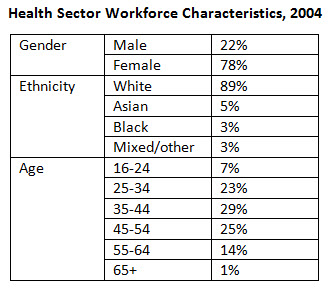
1⠀⠀⠀⠀⠀⠀⠀⠀⠀⠀⠀,h1l? ,sector ,"w=ce #de
2⠀⠀⠀⠀⠀⠀⠀⠀⠀⠀⠀⠀⠀,"*i/ics1 #bjjd
3⠀7777777777777777777777777777777777777777
4⠀,g5d] "" ,male """" #bb.0
5⠀⠀⠀⠀⠀⠀⠀⠀⠀⠀⠀,female "" #gh.0
6⠀,e?nic;y ,:ite """" #hi.0
7⠀⠀⠀⠀⠀⠀⠀⠀⠀⠀⠀,asian """ #e.0
8⠀⠀⠀⠀⠀⠀⠀⠀⠀⠀⠀,black """ #c.0
9⠀⠀⠀⠀⠀⠀⠀⠀⠀⠀⠀,mix$_/o!r #c.0
10 ,age """ #af-#bd "" #g.0
11 ⠀⠀⠀⠀⠀⠀⠀⠀⠀⠀⠀⠀⠀⠀⠀⠀⠀⠀#be-#cd "" #bc.0
12 ⠀⠀⠀⠀⠀⠀⠀⠀⠀⠀⠀⠀⠀⠀⠀⠀⠀⠀#ce-#dd "" #bi.0
13 ⠀⠀⠀⠀⠀⠀⠀⠀⠀⠀⠀⠀⠀⠀⠀⠀⠀⠀#de-#ed "" #be.0
14 ⠀⠀⠀⠀⠀⠀⠀⠀⠀⠀⠀⠀⠀⠀⠀⠀⠀⠀#ee-#fd "" #ad.0
15 ⠀⠀⠀⠀⠀⠀⠀⠀⠀⠀⠀⠀⠀⠀⠀⠀⠀⠀#fe"6 """" #a.0
16 gggggggggggggggggggggggggggggggggggggggg
⠀⠀⠀⠀⠀⠀⠀⠀⠀⠀⠀⠀⠀⠀⠀⠀⠀⠀⠀⠀⠀⠀⠀⠀⠀⠀⠀⠀⠀⠀⠀⠀⠀⠀⠀⠀⠀⠀⠀⠀
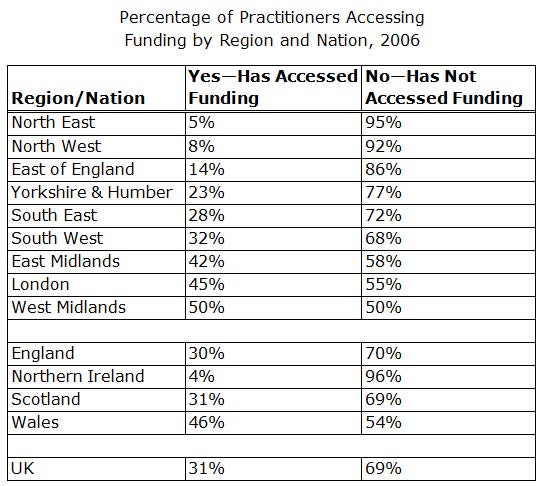
1⠀⠀⠀⠀⠀⠀⠀⠀⠀,p]c5tage ( ,practi;n]s #hj
2⠀⠀⠀⠀⠀⠀⠀⠀,a3ess+ ,fund+ by ,region
3⠀⠀⠀⠀⠀⠀⠀⠀⠀⠀⠀⠀⠀⠀& ,na;n1 #bjjf
4⠀7777777777777777777777777777777777777777
5⠀⠀⠀⠀⠀⠀⠀@.<,key3
6⠀⠀⠀⠀⠀⠀⠀⠀⠀⠀⠀⠀⠀⠀⠀⠀⠀⠀⠀⠀⠀⠀⠀⠀⠀⠀⠀⠀⠀⠀⠀⠀⠀⠀⠀⠀⠀⠀⠀⠀⠀
7⠀,yes ,yes,-,has ,a3ess$ ,fund+
8⠀,no ,no,-,has ,n ,a3ess$ ,fund+@.>
—New Braille Page—
1⠀,region_/,na;n ,yes ,no a#hj2⠀"333333333333333333 "3333 "3333
3⠀,nor? ,ea/ """""""" #e.0 #ie.0
4⠀,nor? ,we/ """""""" #h.0 #ib.0
5⠀,ea/ ( ,5gl& """""" #ad.0 #hf.0
6⠀,york%ire @& ,humb] #bc.0 #gg.0
7⠀,s\? ,ea/ """"""""" #bh.0 #gb.0
8⠀,s\? ,we/ """"""""" #cb.0 #fh.0
9⠀,ea/ ,midl&s """""" #db.0 #eh.0
10 ,london """"""""""" #de.0 #ee.0
11 ,we/ ,midl&s """""" #ej.0 #ej.0
12 ⠀⠀⠀⠀⠀⠀⠀⠀⠀⠀⠀⠀⠀⠀⠀⠀⠀⠀⠀⠀⠀⠀⠀⠀⠀⠀⠀⠀⠀⠀⠀⠀⠀⠀⠀⠀⠀⠀⠀⠀
13 ,5gl& """"""""""""" #cj.0 #gj.0
14 ,nor!rn ,irel& """" #d.0 #if.0
15 ,scotl& """"""""""" #ca.0 #fi.0
16 ,wales """""""""""" #df.0 #ed.0
17 ⠀⠀⠀⠀⠀⠀⠀⠀⠀⠀⠀⠀⠀⠀⠀⠀⠀⠀⠀⠀⠀⠀⠀⠀⠀⠀⠀⠀⠀⠀⠀⠀⠀⠀⠀⠀⠀⠀⠀⠀
18 ,,uk """""""""""""" #ca.0 #fi.0
19 gggggggggggggggggggggggggggggggggggggggg
20 ⠀⠀⠀⠀⠀⠀⠀⠀⠀⠀⠀⠀⠀⠀⠀⠀⠀⠀⠀⠀⠀⠀⠀⠀⠀⠀⠀⠀⠀⠀⠀⠀⠀⠀⠀⠀⠀⠀⠀⠀
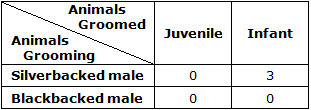
1⠀text
2⠀⠀⠀⠀⠀⠀⠀⠀⠀⠀⠀⠀⠀⠀⠀⠀⠀⠀⠀⠀⠀⠀⠀⠀⠀⠀⠀⠀⠀⠀⠀⠀⠀⠀⠀⠀⠀⠀⠀⠀⠀
3⠀7777777777777777777777777777777777777777
4⠀⠀⠀⠀⠀⠀⠀⠀⠀⠀⠀⠀⠀⠀⠀⠀⠀⠀⠀,animals ,groom$
5⠀⠀⠀⠀⠀⠀⠀⠀⠀⠀⠀⠀⠀⠀⠀⠀⠀⠀⠀"333333333333333
6⠀,animals ,groom+ ,juv5ile ,9fant
7⠀"333333333333333 "3333333 "33333
8⠀,silv]back$ male #j """"" #c
9⠀,blackback$ male #j """"" #j
10 gggggggggggggggggggggggggggggggggggggggg
11 ⠀⠀⠀⠀⠀⠀⠀⠀⠀⠀⠀⠀⠀⠀⠀⠀⠀⠀⠀⠀⠀⠀⠀⠀⠀⠀⠀⠀⠀⠀⠀⠀⠀⠀⠀⠀⠀⠀⠀⠀

1⠀text
2⠀⠀⠀⠀⠀⠀⠀⠀⠀⠀⠀⠀⠀⠀⠀⠀⠀⠀⠀⠀⠀⠀⠀⠀⠀⠀⠀⠀⠀⠀⠀⠀⠀⠀⠀⠀⠀⠀⠀⠀⠀
3⠀⠀⠀⠀⠀⠀,,,example base price me?od,'
4⠀⠀⠀⠀⠀⠀⠀⠀⠀⠀⠀⠀⠀⠀⠀⠀⠀⠀⠀⠀⠀⠀⠀⠀⠀⠀⠀⠀⠀⠀⠀⠀⠀⠀⠀⠀⠀⠀⠀⠀⠀
5⠀,pr(it """""""""""" @s# c4ej #aj.0
6⠀,ov]h1d """"""""""" # i4de #bg.0
7⠀,labor """""""""""" # i4aj #bf.0
8⠀,raw ,food ,co/s "" #ab4ie #cg.0
9⠀⠀⠀⠀⠀⠀⠀⠀⠀⠀⠀⠀⠀⠀⠀⠀⠀⠀⠀⠀⠀⠀"3333333 "33333
10 ,cu/om]'s ,m1l ,co/ @s#ce4jj #ajj.0
11 ⠀⠀⠀⠀⠀⠀⠀⠀⠀⠀⠀⠀⠀⠀⠀⠀⠀⠀⠀⠀⠀⠀⠀⠀⠀⠀⠀⠀⠀⠀⠀⠀⠀⠀⠀⠀⠀⠀⠀⠀
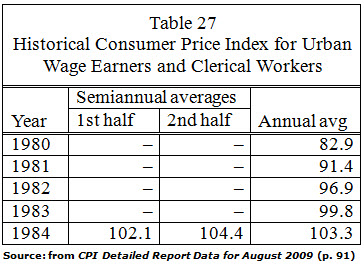
1⠀7777777777777777777777777777777777 #,-
2⠀⠀⠀⠀⠀⠀⠀⠀⠀⠀⠀⠀⠀⠀⠀⠀,table #bg
3⠀⠀⠀⠀⠀⠀⠀⠀⠀,hi/orical ,3sum] ,price
4⠀⠀⠀⠀⠀⠀⠀⠀⠀⠀⠀,9dex = ,urban ,wage
5⠀⠀⠀⠀⠀⠀⠀⠀⠀,e>n]s & ,cl]ical ,"w]s
6⠀⠀⠀⠀⠀⠀⠀⠀⠀⠀⠀⠀⠀⠀⠀⠀⠀⠀⠀⠀⠀⠀⠀⠀⠀⠀⠀⠀⠀⠀⠀⠀⠀⠀⠀⠀⠀⠀⠀⠀⠀
7⠀⠀⠀⠀⠀⠀⠀⠀,semiannual av]ages
8⠀⠀⠀⠀⠀⠀⠀⠀"3333333333333333333
9⠀,ye> #ast half #bnd half ,annual avg
10 "3333 "33333333 "33333333 "3333333333
11 #aihj ,- """""" ,- """""" #hb4i
12 #aiha ,- """""" ,- """""" #ia4d
13 #aihb ,- """""" ,- """""" #if4i
14 #aihc ,- """""" ,- """""" #ii4h
15 #aihd #ajb4a "" #ajd4d "" #ajc4c
16 gggggggggggggggggggggggggggggggggggggggg
17 ⠀⠀⠀⠀,s\rce3 f .7,,cpi ,detail$ ,report
18 ⠀⠀⠀⠀,data = ,augu/ #bjji.' "<;p4 #ia">
19 ⠀⠀⠀⠀⠀⠀⠀⠀⠀⠀⠀⠀⠀⠀⠀⠀⠀⠀⠀⠀⠀⠀⠀⠀⠀⠀⠀⠀⠀⠀⠀⠀⠀⠀⠀⠀⠀⠀⠀⠀

1⠀text
2⠀⠀⠀⠀⠀⠀⠀⠀⠀⠀⠀⠀⠀⠀⠀⠀⠀⠀⠀⠀⠀⠀⠀⠀⠀⠀⠀⠀⠀⠀⠀⠀⠀⠀⠀⠀⠀⠀⠀⠀⠀
3⠀7777777777777777777777777777777777777777
4⠀⠀⠀⠀⠀⠀⠀@.<,guide dots 9dicate a space =
5⠀⠀⠀⠀⠀an answ]4@.>
6⠀⠀⠀⠀⠀⠀⠀⠀⠀⠀⠀⠀⠀⠀⠀⠀⠀⠀⠀⠀⠀⠀⠀⠀⠀⠀⠀⠀⠀⠀⠀⠀⠀⠀⠀⠀⠀⠀⠀⠀⠀
7⠀,"d ,temp]ature at #aj3#jj
8⠀"3333333 "333333333333333333333
9⠀,mon"d """"""""""""""""""""""
10 ,tues"d """"""""""""""""""""""
11 ,w$nes"d """"""""""""""""""""""
12 ,?urs"d """"""""""""""""""""""
13 ,fri"d """"""""""""""""""""""
14 gggggggggggggggggggggggggggggggggggggggg
15 ⠀⠀⠀⠀⠀⠀⠀⠀⠀⠀⠀⠀⠀⠀⠀⠀⠀⠀⠀⠀⠀⠀⠀⠀⠀⠀⠀⠀⠀⠀⠀⠀⠀⠀⠀⠀⠀⠀⠀⠀

1⠀7777777777777777777777777777777777 #,-
2⠀⠀⠀⠀⠀⠀⠀⠀⠀⠀⠀⠀⠀⠀⠀⠀,table #ac
3⠀⠀⠀⠀⠀⠀⠀⠀⠀,tr5ds 9 ,availabil;y (
4⠀⠀⠀⠀⠀⠀⠀⠀⠀,drugs by #abth ,grad]s
5⠀⠀⠀⠀⠀⠀⠀⠀⠀⠀⠀⠀⠀⠀⠀⠀⠀⠀⠀⠀⠀⠀⠀⠀⠀⠀⠀⠀⠀⠀⠀⠀⠀⠀⠀⠀⠀⠀⠀⠀⠀
6⠀⠀⠀,p]c5tage say+ 8fairly easy0 or 8v
7⠀easy0 to get
8⠀⠀⠀⠀⠀⠀⠀⠀⠀⠀⠀⠀⠀⠀⠀⠀⠀⠀⠀⠀⠀⠀⠀⠀⠀⠀⠀⠀⠀⠀⠀⠀⠀⠀⠀⠀⠀⠀⠀⠀⠀
9⠀⠀⠀⠀⠀⠀⠀@.<,a s]ies ( dot #es acr ! wid? (
10 ⠀⠀⠀⠀a column 9dicates a blank space4@.>
11 ⠀⠀⠀⠀⠀⠀⠀⠀⠀⠀⠀⠀⠀⠀⠀⠀⠀⠀⠀⠀⠀⠀⠀⠀⠀⠀⠀⠀⠀⠀⠀⠀⠀⠀⠀⠀⠀⠀⠀⠀
12 ⠀⠀⠀⠀⠀⠀⠀⠀⠀⠀⠀⠀⠀⠀#aihf #aihg #aihh #aihi
13 ⠀⠀⠀⠀⠀⠀⠀⠀⠀⠀⠀⠀⠀⠀"3333 "3333 "3333 "3333
14 ,m>ijuana "" #he4b #hd4h #he4j #hd4c
15 ,amy_/butyl
16 ⠀⠀nitrites """"" #bc4i #be4i #bf4h
17 ,,lsd """""" #bh4e #ca4d #cc4c #ch4c
18 ,"s o!r
19 ⠀⠀halluc9og5 #bd4i #be4j #bf4b #bh4b
20 ,,pcp """""" """"" #bb4h #bd4i #bh4i
21 ,ec/asy
22 ⠀⠀"<,,mdma"> """"" """"" """"" #ba4g
23 gggggggggggggggggggggggggggggggggggggggg
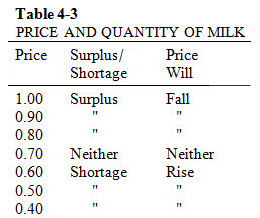
1⠀⠀⠀⠀⠀⠀⠀⠀⠀⠀⠀⠀⠀⠀⠀,table #d-#c #bac
2⠀⠀⠀⠀⠀⠀⠀,,,price & quant;y ( milk,'
3⠀⠀⠀⠀⠀⠀⠀⠀⠀⠀⠀⠀⠀⠀⠀⠀⠀⠀⠀⠀⠀⠀⠀⠀⠀⠀⠀⠀⠀⠀⠀⠀⠀⠀⠀⠀⠀⠀⠀⠀⠀
4⠀,price ,surplus_/,%ortage ,price ,w
5⠀"33333 "33333333333333333 "33333333
6⠀#a4jj ,surplus """"""""" ,fall
7⠀#j4ij "1 """"""""""""""" "1
8⠀#j4hj "1 """"""""""""""" "1
9⠀#j4gj ,nei """"""""""""" ,nei
10 #j4fj ,%ortage """"""""" ,rise
11 #j4ej "1 """"""""""""""" "1
12 #j4dj "1 """"""""""""""" "1
13 ⠀⠀⠀⠀⠀⠀⠀⠀⠀⠀⠀⠀⠀⠀⠀⠀⠀⠀⠀⠀⠀⠀⠀⠀⠀⠀⠀⠀⠀⠀⠀⠀⠀⠀⠀⠀⠀⠀⠀⠀

1⠀text
2⠀⠀⠀⠀⠀⠀⠀⠀⠀⠀⠀⠀⠀⠀⠀⠀⠀⠀⠀⠀⠀⠀⠀⠀⠀⠀⠀⠀⠀⠀⠀⠀⠀⠀⠀⠀⠀⠀⠀⠀⠀
3⠀7777777777777777777777777777777777777777
4⠀⠀⠀⠀⠀ article d=fini
5⠀⠀⠀⠀⠀ "3333333333333333333333333333333
6⠀pr=p masc sg masc pl f=m sg f=m pl
7⠀"333 "333333 "333333 "33333 "33333
8⠀a "" ao """" dos """ ( """" (s
9⠀de do """" dos """ da """ das
10 em no """" nos """ na """ nos
11 por pelo "" pelos pela pelas
12 gggggggggggggggggggggggggggggggggggggggg
13 ⠀⠀⠀⠀⠀⠀⠀⠀⠀⠀⠀⠀⠀⠀⠀⠀⠀⠀⠀⠀⠀⠀⠀⠀⠀⠀⠀⠀⠀⠀⠀⠀⠀⠀⠀⠀⠀⠀⠀⠀
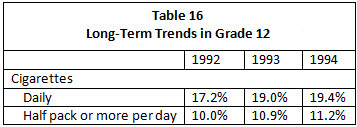
1⠀text
2⠀⠀⠀⠀⠀⠀⠀⠀⠀⠀⠀⠀⠀⠀⠀⠀⠀⠀⠀⠀⠀⠀⠀⠀⠀⠀⠀⠀⠀⠀⠀⠀⠀⠀⠀⠀⠀⠀⠀⠀⠀
3⠀7777777777777777777777777777777777777777
4⠀⠀⠀⠀⠀⠀⠀⠀⠀⠀⠀⠀⠀⠀⠀⠀,table #af
5⠀⠀⠀⠀⠀⠀,l;g-,t]m ,tr5ds 9 ,grade #ab
6⠀⠀⠀⠀⠀⠀⠀⠀⠀⠀⠀⠀⠀⠀⠀⠀⠀⠀⠀⠀⠀⠀⠀⠀⠀⠀⠀⠀⠀⠀⠀⠀⠀⠀⠀⠀⠀⠀⠀⠀⠀
7⠀⠀⠀⠀⠀⠀⠀@.<,figures 9 ! table >e
8⠀⠀⠀⠀⠀p]c5tages4@.>
9⠀⠀⠀⠀⠀⠀⠀⠀⠀⠀⠀⠀⠀⠀⠀⠀⠀⠀⠀⠀⠀⠀⠀⠀⠀⠀⠀⠀⠀⠀⠀⠀⠀⠀⠀⠀⠀⠀⠀⠀⠀
10 ⠀⠀⠀⠀⠀⠀⠀⠀⠀⠀⠀⠀⠀⠀⠀⠀⠀#aiib #aiic #aiid
11 ⠀⠀⠀⠀⠀⠀⠀⠀⠀⠀⠀⠀⠀⠀⠀⠀⠀"3333 "3333 "3333
12 ,cig>ettes
13 ⠀⠀,daily """""" #ag4b #ai4j #ai4d
14 ⠀⠀,half pack or
15 ⠀⠀⠀⠀m p] "d """ #aj4j #aj4i #aa4b
16 gggggggggggggggggggggggggggggggggggggggg
17 ⠀⠀⠀⠀⠀⠀⠀⠀⠀⠀⠀⠀⠀⠀⠀⠀⠀⠀⠀⠀⠀⠀⠀⠀⠀⠀⠀⠀⠀⠀⠀⠀⠀⠀⠀⠀⠀⠀⠀⠀
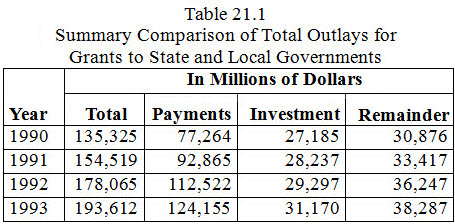
1⠀text
2⠀⠀⠀⠀⠀⠀⠀⠀⠀⠀⠀⠀⠀⠀⠀⠀⠀⠀⠀⠀⠀⠀⠀⠀⠀⠀⠀⠀⠀⠀⠀⠀⠀⠀⠀⠀⠀⠀⠀⠀⠀
3⠀⠀⠀⠀⠀⠀⠀⠀⠀⠀⠀⠀⠀⠀⠀,table #ba4a
4⠀⠀⠀⠀⠀⠀⠀,summ>y ,comp>ison ( ,total
5⠀⠀⠀⠀⠀⠀⠀⠀,\tlays = ,grants to ,/ate
6⠀⠀⠀⠀⠀⠀⠀⠀⠀⠀⠀⠀& ,local ,gov]n;ts
7⠀7777777777777777777777777777777777777777
8⠀⠀⠀⠀⠀⠀⠀,9 ,millions ( ,doll>s
9⠀⠀⠀⠀⠀⠀⠀"33333333333333333333333333333333
10 ye> total pay;ts 9ve/;t rema9d]
11 "3333 "3333333 "3333333 "333333 "333333
12 #aiij #ace1cbe #gg1bfd #bg1ahe #cj1hgf
13 #aiia #aed1eai #ib1hfe #bh1bcg #cc1dag
14 #aiib #agh1jfe #aab1ebb #bi1big #cf1bdg
15 #aiic #aic1fab #abd1aee #ca1agj #ch1bhg
16 gggggggggggggggggggggggggggggggggggggggg
17 ⠀⠀⠀⠀⠀⠀⠀⠀⠀⠀⠀⠀⠀⠀⠀⠀⠀⠀⠀⠀⠀⠀⠀⠀⠀⠀⠀⠀⠀⠀⠀⠀⠀⠀⠀⠀⠀⠀⠀⠀

1⠀7777777777777777777777777777777777 #,-
2⠀⠀⠀⠀,,sat ,scores by ,race & ,e?nic;y
3⠀⠀⠀⠀⠀⠀⠀⠀⠀⠀⠀⠀⠀⠀⠀⠀⠀⠀⠀⠀⠀⠀⠀⠀⠀⠀⠀⠀⠀⠀⠀⠀⠀⠀⠀⠀⠀⠀⠀⠀⠀
4⠀⠀⠀⠀⠀⠀⠀@.<,key to column & r[ h1d+s3
5⠀⠀⠀⠀⠀⠀⠀⠀⠀⠀⠀⠀⠀⠀⠀⠀⠀⠀⠀⠀⠀⠀⠀⠀⠀⠀⠀⠀⠀⠀⠀⠀⠀⠀⠀⠀⠀⠀⠀⠀⠀
6⠀⠀⠀⠀⠀,column h1d+s
7⠀mms ,,sat ,ma? ,m1n ,scores
8⠀rec ,racial_/,e?nic ,category
9⠀vms ,,sat ,v]bal ,m1n ,scores
10 ⠀⠀⠀⠀⠀⠀⠀⠀⠀⠀⠀⠀⠀⠀⠀⠀⠀⠀⠀⠀⠀⠀⠀⠀⠀⠀⠀⠀⠀⠀⠀⠀⠀⠀⠀⠀⠀⠀⠀⠀
11 ⠀⠀⠀⠀,r[ h1d+s
12 aam ,african ,am]ican
13 nan ,native ,am]ican or ,alaskan ,native
14 wht ,:ite "<exclud+ ,lat9o orig9">@.>
15 ⠀⠀⠀⠀⠀⠀⠀⠀⠀⠀⠀⠀⠀⠀⠀⠀⠀⠀⠀⠀⠀⠀⠀⠀⠀⠀⠀⠀⠀⠀⠀⠀⠀⠀⠀⠀⠀⠀⠀⠀
16 rec vms mms totals
17 "33 "333 "333 "33333
18 nan #dhb #dha #ifc
19 aam #dcd #dbf #hfj
20 wht #ebh #ecj #ajeh
21 gggggggggggggggggggggggggggggggggggggggg
22 ⠀⠀⠀⠀⠀⠀⠀⠀⠀⠀⠀⠀⠀⠀⠀⠀⠀⠀⠀⠀⠀⠀⠀⠀⠀⠀⠀⠀⠀⠀⠀⠀⠀⠀⠀⠀⠀⠀⠀⠀
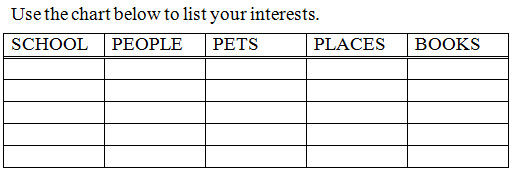
1⠀⠀⠀⠀⠀,use ! *>t 2l to li/ yr #,-
2⠀⠀⠀⠀⠀9t]e/s4
3⠀7777777777777777777777777777777777777777
4⠀⠀⠀⠀⠀⠀⠀@.<,pr9t table has five blank
5⠀⠀⠀⠀⠀r[s4@.>
6⠀⠀⠀⠀⠀⠀⠀⠀⠀⠀⠀⠀⠀⠀⠀⠀⠀⠀⠀⠀⠀⠀⠀⠀⠀⠀⠀⠀⠀⠀⠀⠀⠀⠀⠀⠀⠀⠀⠀⠀⠀
7⠀,,,s*ool p pets places books,'
8⠀"3333333 "3 "333 "33333 "333333
9⠀"""""""" "" """" """""" """""""
10 """""""" "" """" """""" """""""
11 gggggggggggggggggggggggggggggggggggggggg
12 ⠀⠀⠀⠀⠀⠀⠀⠀⠀⠀⠀⠀⠀⠀⠀⠀⠀⠀⠀⠀⠀⠀⠀⠀⠀⠀⠀⠀⠀⠀⠀⠀⠀⠀⠀⠀⠀⠀⠀⠀

1⠀text
2⠀⠀⠀⠀⠀⠀⠀⠀⠀⠀⠀⠀⠀⠀⠀⠀⠀⠀⠀⠀⠀⠀⠀⠀⠀⠀⠀⠀⠀⠀⠀⠀⠀⠀⠀⠀⠀⠀⠀⠀⠀
3⠀7777777777777777777777777777777777777777
4⠀⠀⠀⠀⠀⠀⠀@.<.=\o ,"r >r[@.>
5⠀⠀⠀⠀⠀⠀⠀⠀⠀⠀⠀⠀⠀⠀⠀⠀⠀⠀⠀⠀⠀⠀⠀⠀⠀⠀⠀⠀⠀⠀⠀⠀⠀⠀⠀⠀⠀⠀⠀⠀⠀
6⠀,cause ;\o ,e6ect
7⠀"33333333333333 "33 "333333333333333
8⠀,$ told a lie4 ;\o ,i got upset4
9⠀,$ d5i$ x4 """" ;\o ,i got angri]4
10 ,$ 2tray$ o!rs4 ;\o ,he 5d$ up fr.s4
11 """"""""""""""" ;\o """"""""""""""""
12 """"""""""""""" ;\o """"""""""""""""
13 """"""""""""""" ;\o """"""""""""""""
14 gggggggggggggggggggggggggggggggggggggggg
15 ⠀⠀⠀⠀⠀⠀⠀⠀⠀⠀⠀⠀⠀⠀⠀⠀⠀⠀⠀⠀⠀⠀⠀⠀⠀⠀⠀⠀⠀⠀⠀⠀⠀⠀⠀⠀⠀⠀⠀⠀

1⠀text
2⠀⠀⠀⠀⠀⠀⠀⠀⠀⠀⠀⠀⠀⠀⠀⠀⠀⠀⠀⠀⠀⠀⠀⠀⠀⠀⠀⠀⠀⠀⠀⠀⠀⠀⠀⠀⠀⠀⠀⠀⠀
3⠀7777777777777777777777777777777777777777
4⠀⠀⠀⠀⠀⠀⠀@.<,"p ( ! table is omitt$ 9 pr9t4
5⠀⠀⠀⠀⠀,? omitt$ sec;n is 9dicat$ by an
6⠀⠀⠀⠀⠀ellipsis4@.>
7⠀⠀⠀⠀⠀⠀⠀⠀⠀⠀⠀⠀⠀⠀⠀⠀⠀⠀⠀⠀⠀⠀⠀⠀⠀⠀⠀⠀⠀⠀⠀⠀⠀⠀⠀⠀⠀⠀⠀⠀⠀
8⠀⠀⠀⠀⠀⠀⠀,sunrise ,sunset
9⠀⠀⠀⠀⠀⠀⠀"33333333333 "3333333333
10 ,jan #i3#dg ,,am #d3#ce ,,pm
11 ,feb #h3#bg ,,am #f3#ja ,,pm
12 444
13 ,nov #i3#ai ,,am #d3#aj ,,pm
14 ,dec #aj3#ad ,,am #c3#da ,,pm
15 gggggggggggggggggggggggggggggggggggggggg
16 ⠀⠀⠀⠀⠀⠀⠀⠀⠀⠀⠀⠀⠀⠀⠀⠀⠀⠀⠀⠀⠀⠀⠀⠀⠀⠀⠀⠀⠀⠀⠀⠀⠀⠀⠀⠀⠀⠀⠀⠀

1⠀7777777777777777777777777777777777 #,-
2⠀⠀⠀⠀⠀⠀⠀⠀⠀⠀⠀,,,he>t attacks 9 !
3⠀⠀⠀⠀⠀⠀⠀⠀⠀⠀⠀unit$ /ates1,' #bjjj
4⠀⠀⠀⠀⠀⠀⠀⠀⠀⠀⠀⠀⠀⠀⠀⠀⠀⠀⠀⠀⠀⠀⠀⠀⠀⠀⠀⠀⠀⠀⠀⠀⠀⠀⠀⠀⠀⠀⠀⠀⠀
5⠀⠀⠀⠀⠀⠀⠀@.<,pr9t %[s a horizontal b>
6⠀⠀⠀⠀⠀graph4 ,9 brl1 ! graph has be5 *ang$
7⠀⠀⠀⠀⠀to a table4@.>
8⠀⠀⠀⠀⠀⠀⠀⠀⠀⠀⠀⠀⠀⠀⠀⠀⠀⠀⠀⠀⠀⠀⠀⠀⠀⠀⠀⠀⠀⠀⠀⠀⠀⠀⠀⠀⠀⠀⠀⠀⠀
9⠀⠀⠀⠀⠀⠀⠀⠀⠀⠀,attacks 9 ?\s&s
10 ⠀⠀⠀⠀⠀⠀⠀⠀⠀"33333333333333333
11 ,age ,males ,females
12 "333333 "3333333 "3333333
13 #bi-#dd #cd1jjj #aj1jjj
14 #de-#fd #beg1jjj #hf1jjj
15 #fe"6 #dcj1jjj #cad1jjj
16 ⠀⠀⠀⠀,s\rce3 ,am]ican ,he>t ,associa;n
17 gggggggggggggggggggggggggggggggggggggggg
18 ⠀⠀⠀⠀⠀⠀⠀⠀⠀⠀⠀⠀⠀⠀⠀⠀⠀⠀⠀⠀⠀⠀⠀⠀⠀⠀⠀⠀⠀⠀⠀⠀⠀⠀⠀⠀⠀⠀⠀⠀

1⠀⠀⠀⠀⠀⠀⠀@.<,! table is r1d acr #fj
2⠀⠀⠀⠀⠀fac+ pages4@.>
3⠀⠀⠀⠀⠀⠀⠀⠀⠀⠀⠀⠀⠀⠀⠀⠀⠀⠀⠀⠀⠀⠀⠀⠀⠀⠀⠀⠀⠀⠀⠀⠀⠀⠀⠀⠀⠀⠀⠀⠀⠀
4⠀⠀⠀⠀⠀⠀⠀⠀⠀,unioniz$ ,manual ,"w]s
5⠀7777777777777777777777777777777777777777
6⠀⠀⠀⠀⠀⠀⠀⠀⠀⠀#aijj #aiaj #aibj #aicj
7⠀⠀⠀⠀⠀⠀⠀⠀⠀⠀"3333 "3333 "3333 "333333333
8⠀,d5m>k #ac4i #af4b #cg4j #cc4h """"
9⠀,sw$5 #h4g #ab4b #cb4d #da4g """"
10 ,norway #aj4c #ad4f #ce4i #dc4b """"
11 ,f9l& #f4i #aj4c #be4f #cd4g """"
12 gggggggggggggggggggggggggggggggggggggggg
—New Braille Page—
1⠀⠀⠀⠀⠀⠀⠀⠀⠀⠀⠀⠀⠀⠀⠀⠀⠀⠀⠀⠀⠀⠀⠀⠀⠀⠀⠀⠀⠀⠀⠀⠀⠀⠀⠀⠀⠀a#fj2⠀⠀⠀⠀⠀⠀⠀⠀⠀⠀⠀⠀⠀⠀⠀⠀⠀⠀⠀⠀⠀⠀⠀⠀⠀⠀⠀⠀⠀⠀⠀⠀⠀⠀⠀⠀⠀⠀⠀⠀⠀
3⠀⠀⠀⠀⠀⠀⠀⠀⠀⠀⠀⠀⠀⠀⠀⠀⠀⠀⠀⠀⠀⠀⠀⠀⠀⠀⠀⠀⠀⠀⠀⠀⠀⠀⠀⠀⠀⠀⠀⠀⠀
4⠀⠀⠀⠀⠀⠀⠀⠀⠀⠀⠀⠀⠀⠀⠀⠀⠀⠀⠀⠀⠀⠀⠀⠀⠀⠀⠀⠀⠀⠀⠀⠀⠀⠀⠀⠀⠀⠀⠀⠀⠀
5⠀7777777777777777777777777777777777777777
6⠀#aidj #aiej
7⠀"3333 "3333
8⠀#dd4c #ed4d
9⠀#fd4c #ge4b
10 #fg4i #gg4c
11 #dd4b #eb4a
12 gggggggggggggggggggggggggggggggggggggggg

1⠀text
2⠀⠀⠀⠀⠀⠀⠀⠀⠀⠀⠀⠀⠀⠀⠀⠀⠀⠀⠀⠀⠀⠀⠀⠀⠀⠀⠀⠀⠀⠀⠀⠀⠀⠀⠀⠀⠀⠀⠀⠀⠀
3⠀7777777777777777777777777777777777777777
4⠀⠀⠀⠀⠀⠀⠀⠀⠀,unioniz$ ,manual ,"w]s
5⠀⠀⠀⠀⠀⠀⠀⠀⠀⠀⠀⠀⠀⠀⠀⠀⠀⠀⠀⠀⠀⠀⠀⠀⠀⠀⠀⠀⠀⠀⠀⠀⠀⠀⠀⠀⠀⠀⠀⠀⠀
6⠀⠀⠀⠀⠀⠀⠀@.<,table is divid$ v]tically 9to
7⠀⠀⠀⠀⠀#b sec;ns4@.>
8⠀⠀⠀⠀⠀⠀⠀⠀⠀⠀⠀⠀⠀⠀⠀⠀⠀⠀⠀⠀⠀⠀⠀⠀⠀⠀⠀⠀⠀⠀⠀⠀⠀⠀⠀⠀⠀⠀⠀⠀⠀
9⠀⠀⠀⠀⠀⠀⠀⠀⠀⠀#aijj #aiaj #aibj #aicj
10 ⠀⠀⠀⠀⠀⠀⠀⠀⠀"3333 "3333 "3333 "3333
11 ,d5m>k #ac4i #af4b #cg4j #cc4h
12 ,sw$5 #h4g #ab4b #cb4d #da4g
13 ,norway #aj4c #ad4f #ce4i #dc4b
14 ,f9l& #f4i #aj4c #be4f #cd4g
15 ⠀⠀⠀⠀⠀⠀⠀⠀⠀⠀⠀⠀⠀⠀⠀⠀⠀⠀⠀⠀⠀⠀⠀⠀⠀⠀⠀⠀⠀⠀⠀⠀⠀⠀⠀⠀⠀⠀⠀⠀
16 ⠀⠀⠀⠀⠀⠀⠀⠀⠀#aidj #aiej
17 ⠀⠀⠀⠀⠀⠀⠀⠀⠀"3333 "3333
18 ,d5m>k #dd4c #ed4d
19 ,sw$5 #fd4c #ge4b
20 ,norway #fg4i #gg4c
21 ,f9l& #dd4b #eb4a
22 gggggggggggggggggggggggggggggggggggggggg
23 ⠀⠀⠀⠀⠀⠀⠀⠀⠀⠀⠀⠀⠀⠀⠀⠀⠀⠀⠀⠀⠀⠀⠀⠀⠀⠀⠀⠀⠀⠀⠀⠀⠀⠀⠀⠀⠀⠀⠀⠀

1⠀text
2⠀⠀⠀⠀⠀⠀⠀⠀⠀⠀⠀⠀⠀⠀⠀⠀⠀⠀⠀⠀⠀⠀⠀⠀⠀⠀⠀⠀⠀⠀⠀⠀⠀⠀⠀⠀⠀⠀⠀⠀⠀
3⠀7777777777777777777777777777777777777777
4⠀⠀⠀⠀⠀⠀⠀@.<,columns & r[s >e 9t]*ang$4@.>
5⠀⠀⠀⠀⠀⠀⠀⠀⠀⠀⠀⠀⠀⠀⠀⠀⠀⠀⠀⠀⠀⠀⠀⠀⠀⠀⠀⠀⠀⠀⠀⠀⠀⠀⠀⠀⠀⠀⠀⠀⠀
6⠀⠀⠀⠀⠀⠀⠀,sunrise ,sunset
7⠀⠀⠀⠀⠀⠀⠀"3333333333 "3333333333
8⠀,jan #g3#bc ,,am #e3#ec ,,pm
9⠀,feb #g3#jb ,,am #f3#ai ,,pm
10 ,m> #f3#ca ,,am #f3#ch ,,pm
11 ,apr #f3#aj ,,am #g3#eg ,,pm
12 ,may #e3#ej ,,am #h3#ag ,,pm
13 ,jun #e3#cj ,,am #h3#ca ,,pm
14 gggggggggggggggggggggggggggggggggggggggg
15 ⠀⠀⠀⠀⠀⠀⠀⠀⠀⠀⠀⠀⠀⠀⠀⠀⠀⠀⠀⠀⠀⠀⠀⠀⠀⠀⠀⠀⠀⠀⠀⠀⠀⠀⠀⠀⠀⠀⠀⠀
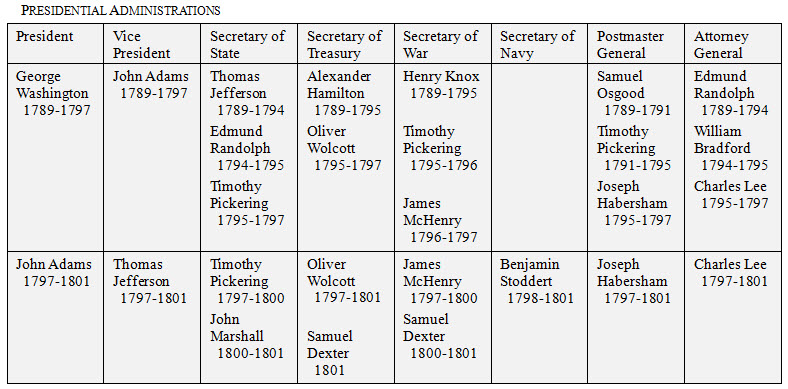
1⠀7777777777777777777777777777777777 #,-
2⠀⠀⠀⠀⠀⠀⠀,,presid5tial ,,adm9i/ra;ns
3⠀⠀⠀⠀⠀⠀⠀⠀⠀⠀⠀⠀⠀⠀⠀⠀⠀⠀⠀⠀⠀⠀⠀⠀⠀⠀⠀⠀⠀⠀⠀⠀⠀⠀⠀⠀⠀⠀⠀⠀⠀
4⠀⠀⠀⠀⠀⠀⠀@.<,pr9t =mat is *ang$4 ,r[ h1d+s
5⠀⠀⠀⠀⠀>e block$ 9 cell #e2 column h1d+s
6⠀⠀⠀⠀⠀2g9 9 cell #a4 ,all h1d+s >e rep1t$
7⠀⠀⠀⠀⠀= cl>;y4 ,a colon sep>ates h1d+s f
8⠀⠀⠀⠀⠀table 5tries4
9⠀⠀⠀⠀⠀⠀⠀,a s]ies ( ?ree dot #es 9dicates a
10 ⠀⠀⠀⠀blank 5try 9 pr9t4@.>
11 ⠀⠀⠀⠀⠀⠀⠀⠀⠀⠀⠀⠀⠀⠀⠀⠀⠀⠀⠀⠀⠀⠀⠀⠀⠀⠀⠀⠀⠀⠀⠀⠀⠀⠀⠀⠀⠀⠀⠀⠀
12 ⠀⠀⠀⠀,presid5t3 ,george ,wa%+ton #aghi-
13 ⠀⠀⠀⠀#agig
14 ,vice ,presid5t3 ,john ,adams #aghi-
15 ⠀⠀#agig
16 ,sec ( ,/ate3
17 ⠀⠀,?omas ,je6]son #aghi-#agid
18 ⠀⠀,$mund ,r&olph #agid-#agie
19 ⠀⠀,timo?y ,pick]+ #agie-#agig
20 ,sec ( ,tr1sury3
21 ⠀⠀,alex&] ,hamilton #aghi-#agie
22 ⠀⠀,oliv] ,wolcott #agie-#agig
23 ,sec ( ,w>3
24 ⠀⠀444
25 ,sec ( ,navy3 """

1⠀text
2⠀⠀⠀⠀⠀⠀⠀⠀⠀⠀⠀⠀⠀⠀⠀⠀⠀⠀⠀⠀⠀⠀⠀⠀⠀⠀⠀⠀⠀⠀⠀⠀⠀⠀⠀⠀⠀⠀⠀⠀⠀
3⠀7777777777777777777777777777777777777777
4⠀⠀⠀⠀⠀⠀⠀@.<,a s]ies ( ?ree dot #es
5⠀⠀⠀⠀⠀9dicates a blank space 9 pr9t4
6⠀⠀⠀⠀⠀⠀⠀,columns foll[ "o ano!r 9 ? ord]3
7⠀⠀⠀⠀⠀⠀⠀⠀⠀⠀⠀⠀⠀⠀⠀⠀⠀⠀⠀⠀⠀⠀⠀⠀⠀⠀⠀⠀⠀⠀⠀⠀⠀⠀⠀⠀⠀⠀⠀⠀⠀
8⠀,/ate3 ,capital2 ,nick"n2 ,fl[]2
9⠀⠀⠀,bird@.>
10⠀⠀⠀⠀⠀⠀⠀⠀⠀⠀⠀⠀⠀⠀⠀⠀⠀⠀⠀⠀⠀⠀⠀⠀⠀⠀⠀⠀⠀⠀⠀⠀⠀⠀⠀⠀⠀⠀⠀⠀⠀
11 ,alabama3 ,montgom]y2 ,yell[hamm] ,/ate2
12 ⠀⠀,camellia2 ,yell[hamm]
13 ,alaska3 ,jun1u2 ,! ,la/ ,fronti]2
14 ⠀⠀,=get-,me-,n2 ,will[ ,pt>migan
15 ,>izona3 ,pho5ix2 ,! ,gr& ,canyon ,/ate2
16 ⠀⠀,sagu>o ,cactus2 ,cactus ,wr5
17 ,>kansas3 ,ll ,rock2 """2 ,apple
18 ⠀⠀,blossom2 ,mock+bird
19 gggggggggggggggggggggggggggggggggggggggg
20 ⠀⠀⠀⠀⠀⠀⠀⠀⠀⠀⠀⠀⠀⠀⠀⠀⠀⠀⠀⠀⠀⠀⠀⠀⠀⠀⠀⠀⠀⠀⠀⠀⠀⠀⠀⠀⠀⠀⠀⠀
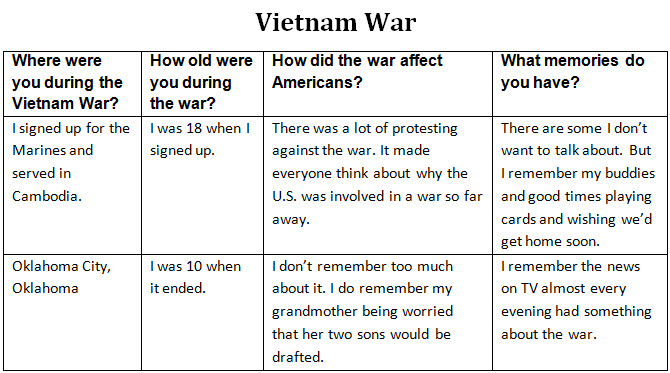
1⠀⠀⠀⠀⠀⠀⠀⠀⠀⠀⠀⠀⠀⠀⠀,vietnam ,w> #bcc
2⠀7777777777777777777777777777777777777777
3⠀⠀⠀⠀⠀⠀⠀@.<,table *ang$ z foll[s3
4⠀⠀⠀⠀⠀⠀⠀⠀⠀⠀⠀⠀⠀⠀⠀⠀⠀⠀⠀⠀⠀⠀⠀⠀⠀⠀⠀⠀⠀⠀⠀⠀⠀⠀⠀⠀⠀⠀⠀⠀⠀
5⠀,": 7 y dur+ ! ,vietnam ,w>8
6⠀⠀⠀,h[ old 7 y dur+ ! w>8
7⠀⠀⠀⠀⠀,h[ did ! w> a6ect ,am]icans8
8⠀⠀⠀⠀⠀⠀⠀,:at memories d y h8@.>
9⠀⠀⠀⠀⠀⠀⠀⠀⠀⠀⠀⠀⠀⠀⠀⠀⠀⠀⠀⠀⠀⠀⠀⠀⠀⠀⠀⠀⠀⠀⠀⠀⠀⠀⠀⠀⠀⠀⠀⠀⠀
10 ,i sign$ up = ! ,m>9es & s]v$ 9
11 ,cambodia4
12 ⠀⠀,i 0 #ah :5 ,i sign$ up4
13 ⠀⠀⠀⠀,"! 0 a lot ( prote/+ ag/ ! w>4 ,x
14 ⠀⠀⠀⠀made "ey"o ?9k ab :y ! ,u4,s4 0
15 ⠀⠀⠀⠀9volv$ 9 a w> s f> away4
16 ⠀⠀⠀⠀⠀⠀,"! >e "s ,i don't want to talk
17 ⠀⠀⠀⠀⠀⠀ab4 ,b ,i rememb] my buddies & gd
18 ⠀⠀⠀⠀⠀⠀"ts play+ c>ds & wi%+ we'd get
19 ⠀⠀⠀⠀⠀⠀home soon4
—New Braille Page—
1⠀,oklahoma ,c;y1 ,oklahoma a#bcc2⠀⠀⠀,i 0 #aj :5 x 5d$4
3⠀⠀⠀⠀⠀,i don't rememb] too m* ab x4 ,i d
4⠀⠀⠀⠀⠀rememb] my gr&"m 2+ worri$ t h] two
5⠀⠀⠀⠀⠀sons wd 2 draft$4
6⠀⠀⠀⠀⠀⠀⠀,i rememb] ! news on ,,tv alm e
7⠀⠀⠀⠀⠀⠀⠀ev5+ _h "s?+ ab ! w>4
8⠀gggggggggggggggggggggggggggggggggggggggg
9⠀⠀⠀⠀⠀⠀⠀⠀⠀⠀⠀⠀⠀⠀⠀⠀⠀⠀⠀⠀⠀⠀⠀⠀⠀⠀⠀⠀⠀⠀⠀⠀⠀⠀⠀⠀⠀⠀⠀⠀⠀⠀
⠀⠀⠀⠀⠀⠀⠀⠀⠀⠀⠀⠀⠀⠀⠀⠀⠀⠀⠀⠀⠀⠀⠀⠀⠀⠀⠀⠀⠀⠀⠀⠀⠀⠀⠀⠀⠀⠀⠀⠀
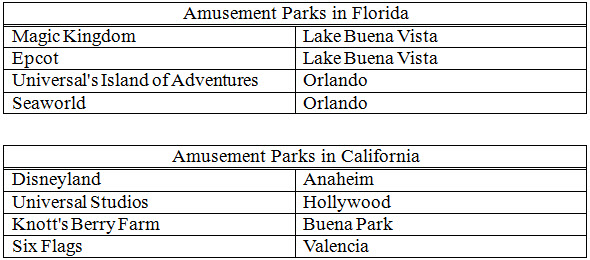
1⠀⠀⠀⠀⠀⠀⠀@.<,table *ang$ z foll[s3
2⠀⠀⠀⠀⠀⠀⠀⠀⠀⠀⠀⠀⠀⠀⠀⠀⠀⠀⠀⠀⠀⠀⠀⠀⠀⠀⠀⠀⠀⠀⠀⠀⠀⠀⠀⠀⠀⠀⠀⠀⠀
3⠀⠀⠀⠀⠀,/ate loca;n
4⠀,amuse;t p>k
5⠀⠀⠀,loca;n@.>
6⠀⠀⠀⠀⠀⠀⠀⠀⠀⠀⠀⠀⠀⠀⠀⠀⠀⠀⠀⠀⠀⠀⠀⠀⠀⠀⠀⠀⠀⠀⠀⠀⠀⠀⠀⠀⠀⠀⠀⠀⠀
7⠀⠀⠀⠀⠀,amuse;t ,p>ks 9 ,florida
8⠀,magic ,k+dom
9⠀⠀⠀,lake ,bu5a ,vi/a
10 ,epcot
11 ⠀⠀,lake ,bu5a ,vi/a
12 ,univ]sal's ,isl& ( ,adv5tures
13 ⠀⠀,orl&o
14 ,s1_w
15 ⠀⠀,orl&o
16 ⠀⠀⠀⠀⠀⠀⠀⠀⠀⠀⠀⠀⠀⠀⠀⠀⠀⠀⠀⠀⠀⠀⠀⠀⠀⠀⠀⠀⠀⠀⠀⠀⠀⠀⠀⠀⠀⠀⠀⠀
17 ⠀⠀⠀⠀,amuse;t ,p>ks 9 ,cali=nia
18 ,4neyl&
19 ⠀⠀,anaheim
20 ,univ]sal ,/udios
21⠀⠀,hollywood
22,knott's ,b]ry ,f>m
23⠀⠀,bu5a ,p>k
24,six ,flags
25 ⠀⠀,val5cia